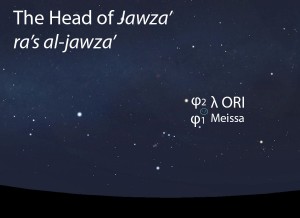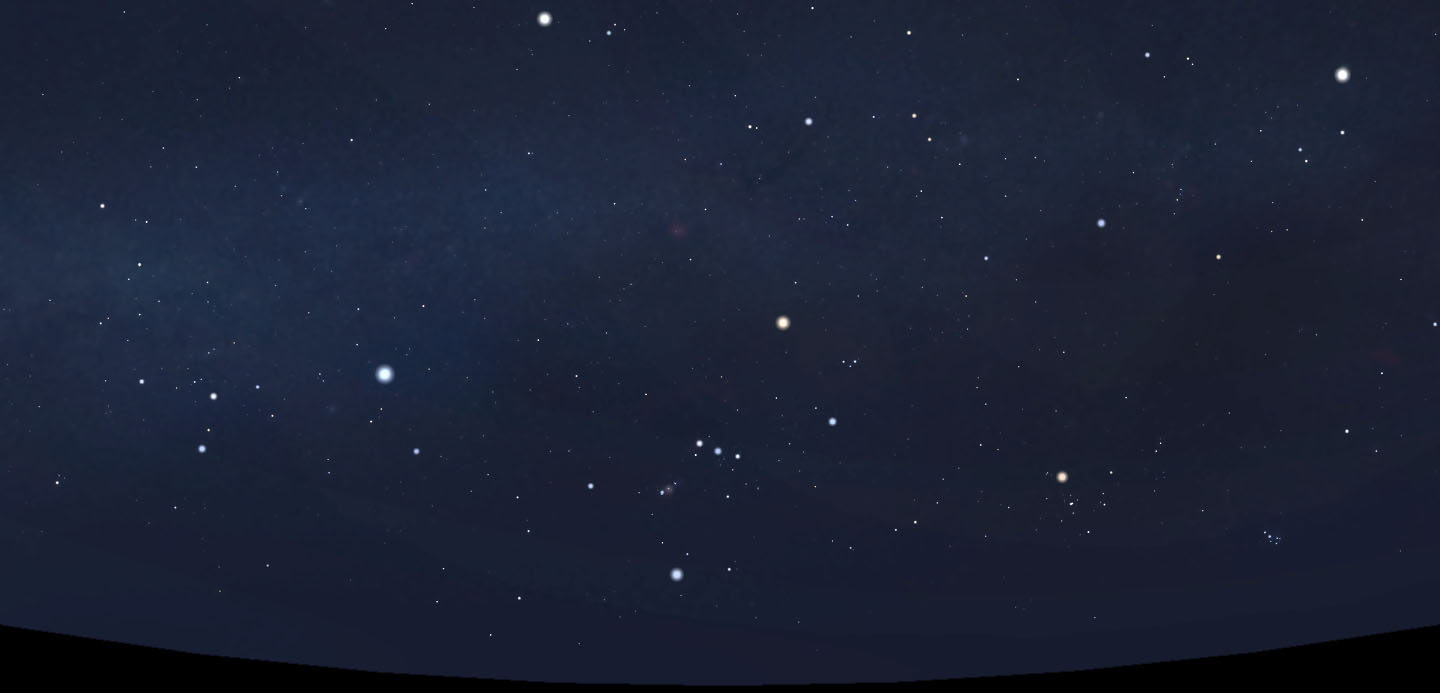Star Names
The Head of Jawza’ (ra’s al-jawza’)
The Head of Jawza’ (ra’s al-Jawza’) is marked by a trio of three stars that represent the head of the female figure of Jawza’. In the earliest times, the name “Jawza’ ” referred to only the three bright stars that are lined up in the middle of the figure.

The Head of Jawza’ (ra’s al-jawza’) as it appears in the west about 45 minutes before sunrise in early December. Sky simulations made with Stellarium.
Appearance
A trio of average stars that are arranged like an equilateral triangle and appear above and between the two stars of the Hands of Jawza’.
Modern Identification
λ ORI (Meissa), blue-white star, magnitude 3.5
φ1 ORI, blue-white star, magnitude 4.4
φ2 ORI, yellow-white star, magnitude 4.1
Timing
The Head of Jawza’ was also known as the lunar station called the Hair Whorl (al-haq’a). Ibn Qutayba (d. 879 CE) reported that the Hair Whorl was said to rise on the morning of June 10 and set on the morning of December 10. On account of the precession of the equinoxes, today we can expect to observe the Head of Jawza’ setting in mid-December and rising in mid-July, as seen from the latitude of Tucson. (See How to Observe on the About page for more on this topic.)
Rain Stars
The Head of Jawza’ does not figure in the calendar of the rains stars.
Lunar Stations
Within the context of the lunar stations, the Head of Jawza’ was known as the Hair Whorl (al-haq’a), the fifth station of the year.
Related Stars and Celestial Complexes
The Head of Jawza’ is part of the Jawza’ (al-jawza’, الجوزاء) folkloric celestial complex, which developed over time from the central stars that mark her Belt of Pearls.
Related Blog Posts
Jawza’, Snow Queen of the Arabs

